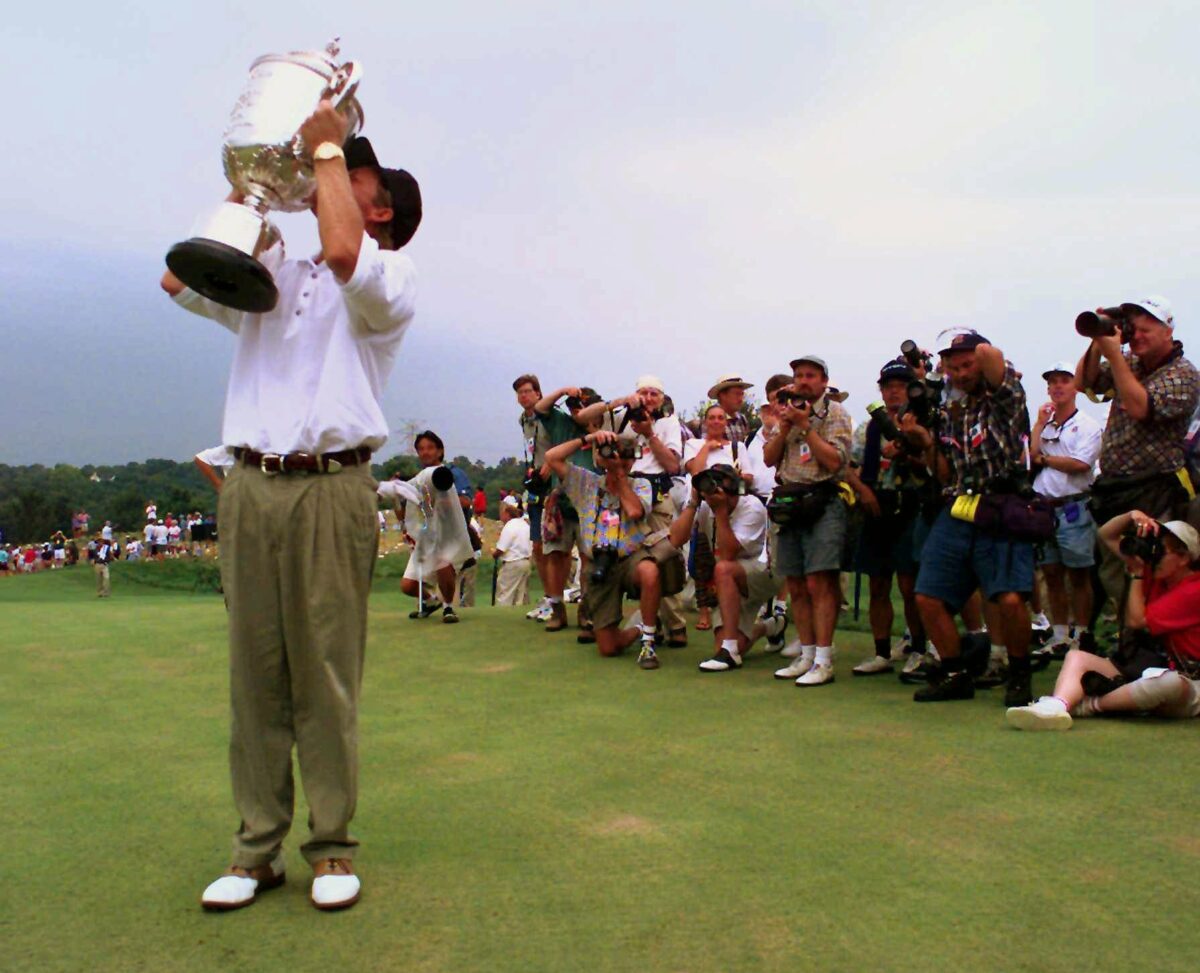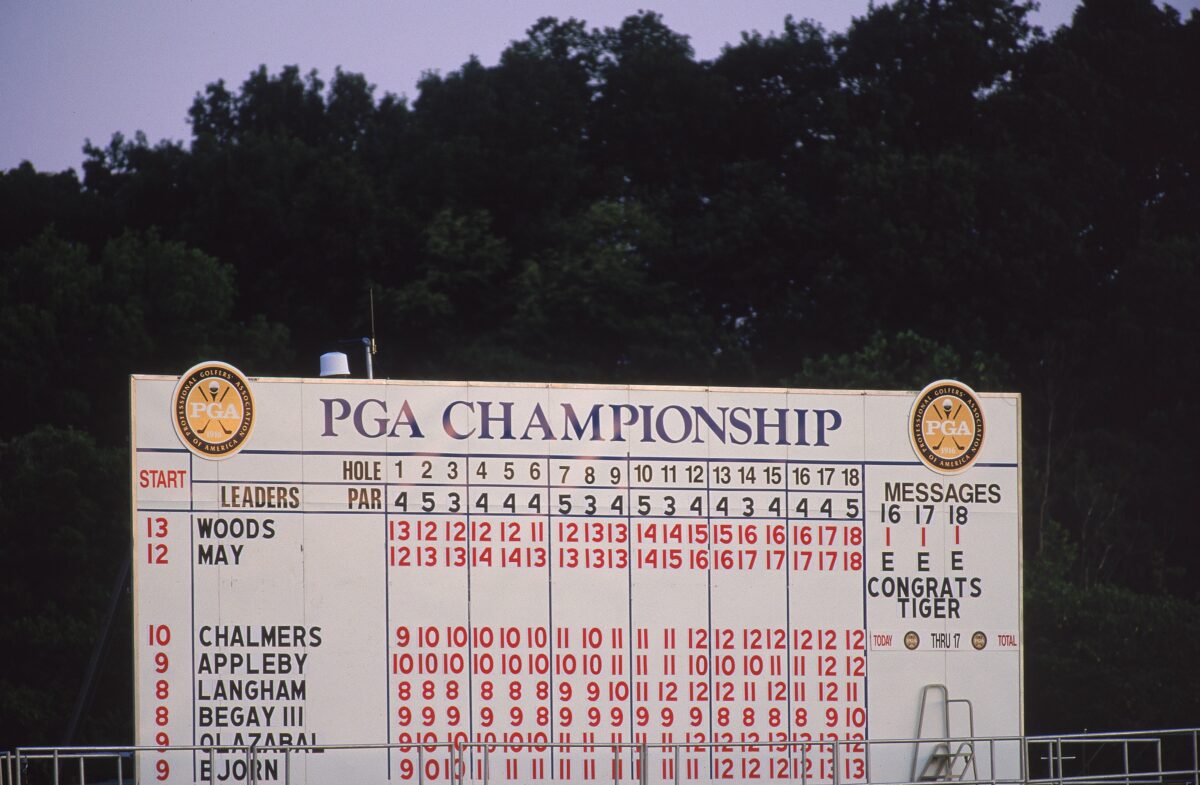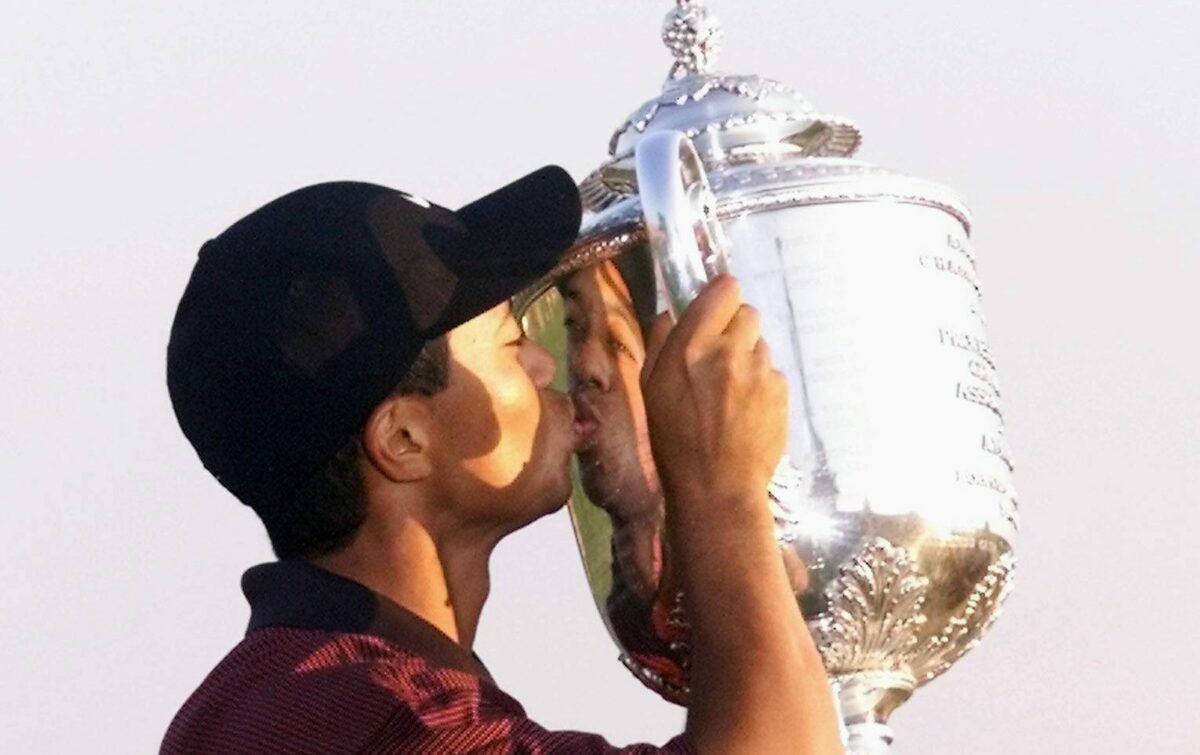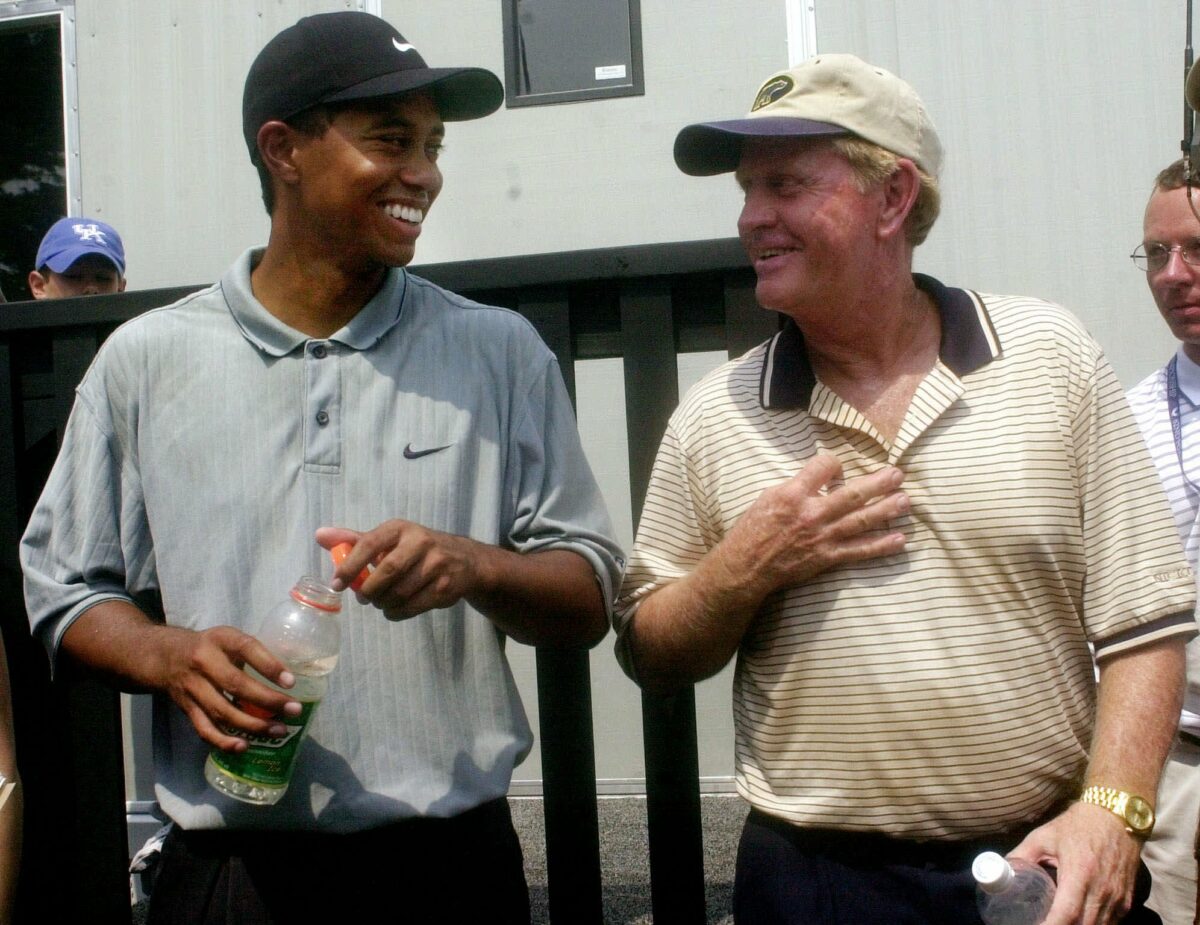Although he raised the Wanamaker Trophy at Valhalla Golf Club in 1996, the seed for the first and only major championship in the long and storied career of Mark Brooks came on the opposite side of the continent in a moment the Texan would just as soon forget.
After the third round of the 1992 U.S. Open at Pebble Beach Golf Links, Brooks was hot, the University of Texas product using a 69 on Saturday to march up the leaderboard and trail leader Gil Morgan by just one heading into the final 18 holes of play.
Brooks had three PGA Tour victories under his belt at this point: the 1988 Canon Sammy Davis Jr.-Greater Hartford Open and a pair of wins in 1991 at the K-Mart Greater Greensboro Open and Greater Milwaukee Open. But aside from a top-5 finish at the 1990 U.S. Open at Medinah, he’d yet to get into serious contention at a major.
With the winds whipping like they often can on the Monterey Peninsula, Brooks folded in the final round, posting two double-bogeys on the front nine and finishing with an 84 that dropped him down the leaderboard. Fellow Texan Tom Kite navigated the blustery conditions and went on to win the title.
Brooks persevered after the devastation, and a lesson was learned. While major moments offer major rewards, it’s often just as important to relax and focus on the individual moments as it is to get caught up in the grandeur.
“That was my crash-and-burn majors experience,” Brooks said. “You realize it’s truly not life and death, right? It’s damn near it. But it’s truly not life and death. I think if you look back on a lot of guys, a lot of them went through something. The Watson meltdown at Carnoustie. You know, everybody probably had a meltdown somewhere.
PGA CHAMPIONSHIP: How to watch | Tournament hub
“So I went in after that and made an assessment. Why did I break down? Most of the time it was because it had something to do with the way you were thinking. I didn’t adjust to the situation properly. They call them halftime adjustments, and when a guy doesn’t make the right halftime adjustments, you’re probably going to get your butt kicked. So that was all part of the learning process. And for me, that all came at Pebble Beach.”
The pain didn’t subside quickly. Brooks, now 63, admitted to feeling the gut punch after his final-round debacle for a lengthy stretch.
“It took several months. You’re doubting yourself. You don’t think you’re good enough,” Brooks said. “But I got to play with the winner, Tom Kite. So I watched it and it was interesting. He managed his ball really well. And, of course, his short game was phenomenal at that time. That’s when he was probably the best. And maybe for a period of time there he was the best at that.”
So armed with first-hand knowledge, when Brooks found himself in a similar situation four years later at the PGA Championship, running near the top of the leaderboard at Valhalla he had that experience to lean on. Of course, this year’s PGA Championship is at the same famous Louisville course.
In each of the first three rounds, Brooks was positioned just behind the leader. He was two shots behind Kentucky native Kenny Perry after the first round, sat in a tie for third behind Phil Mickelson and Justin Leonard after the second round and was in a tie for second with Vijay Singh after the third.

Russ Cochran, another local product, was two strokes up heading into the final round after a scintillating 65 on Saturday. The left-handed Cochran seemed well-positioned for his second PGA Tour victory and first major win, especially in light of his familiarity with the environs. Although to get across the finish line, he’d have to contend with a constellation of stars within four shots of the lead, including Mickelson, Singh, Leonard, Steve Elkington, Greg Norman and Nick Price.
And Brooks, who with his Pebble experience far off in the rearview, now had the ability to stay in the moment, even when a tough field was fluctuating up and down the leaderboard.
Paired with Brooks in the final grouping, Cochran faded early in the round while the Texan charged, using birdies on Nos. 6, 7 and 8 to get to 12 under.
“It was pretty clear early on that Russ was going south and he wasn’t going to have a chance to contend,” Brooks said. “I’ll be honest, I don’t remember one shot he had. I don’t remember all of mine, either. It’s kind of interesting because a lot of people remember who they played with. I’m not being rude, but I don’t remember who I played with many times. If you ask me in all my wins who I played with the last round, I usually don’t have a clue.
“The inconsequential shots, I don’t really remember. There are cliches, you know, ‘One shot at a time.‘ Well, you really play golf a shot ahead. You’re always playing one shot ahead, but you’re actually then focusing on the shot in front of you — period. I got really good at that. I mean if you said, ‘What’s your strength?‘ That was my strength and I had to learn whatever you want to call it, mind tricks. I had to use processes to compartmentalize situations. And I was always doing stuff to shorten the time or make the task seem attainable.”
With one native out of the way, Brooks had to focus on Perry, who also was comfortable navigating the Kentucky bluegrass. Using five birdies in seven holes, Perry charged ahead while Brooks gave three strokes back in a four-hole stretch.
But Perry posted a bogey at the par-5 18th hole, although he still held the lead at 11 under with a host of players within striking distance. One by one, however, they fell to the side. Defending champ Elkington found the bunker on 18 and missed a 10-footer that would have put him in a playoff. Singh made bogey on the final hole and missed the playoff by two. Tommy Tolles also made a charge and had an eagle putt on 18 that would have evened him up with Perry, but missed.
That’s when Brooks kept it simple. Needing a birdie on the final hole to get into sudden death, he knew his best chance was to play to the fat part of the bunker in front of the 18th green.
“That was the play all week,” Brooks said. “I was hitting my 3-wood well at the time. And I knew if I caught it at 102 percent I could carry that front bunker, but there was a 90 percent chance I was going to hit into the bunker. I knew that was the shot and I was only thinking one shot ahead.”
Brooks plunked it in the sand, hit his wedge to a few feet and drained a putt to force bonus golf. Perry, meanwhile, had neglected to hit the range with the title on the line and by the time the playoff started, he was cold and at a disadvantage.
Perry famously hooked his ball through the fairway on the first playoff hole while Brooks averted danger and reached the green in two. After Perry got caught in the rough on both his second and third shots, Brooks knew the trophy was his.
He has never talked about the championship with Perry, but sympathizes with the former Western Kentucky University star, especially since the questionable decision to forego practice swings while on TV has long been considered the wrong one.
“It’s been interesting to watch Kenny’s interviews much later in life. Dang, dude. I feel bad for him,” Brooks said.
“The thing that’s interesting is a lot of this is as much about sacrifice as it is hard work. I was a bit of party boy, you know, until I was about 29. After that U.S. Open, I haven’t touched a drop of alcohol since then. There’s more sacrificing than there is work, in my opinion. Yes, it’s physically exerting, no doubt. You’re out there hitting like 500 balls a day. It’s exhausting but it’s not comparable to a lot of manual labor things, right?
“But then you accomplish something. You win a tournament like the PGA Championship. It’s something special.”












